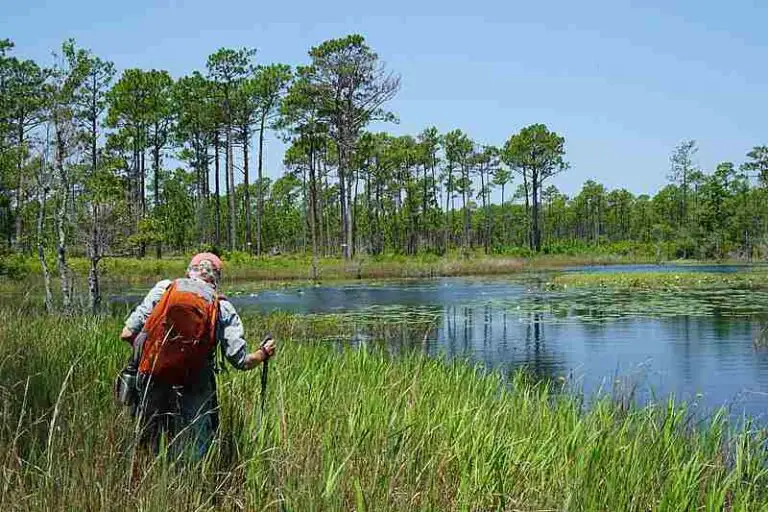Silviculture System Objectives, Parts, Phases and Categories
Silviculture system is a forestry system, project or program, whose aim is to achieve specified and preferred growth conditions for trees and shrubs.
The dynamics of silviculture systems (or silvicultural systems) are human-influenced, but designed to mimic those of natural ecosystems, in order to produce diversified, sustainable and resilient forests. Also, the use of silviculture systems may be referred to as silviculture forestry.
This article discusses silviculture system objectives, parts, phases and categories, as outlined below;
-Objectives of Silviculture System
-Parts of a Silviculture System
-Phases of Silviculture Systems
-Categories of Silviculture System
Objectives of Silviculture System
The aim of silviculture system is to effectively regulate the growth and biodiversity of woody perennial species in forests, to meet the preferences of the land owners or operators, while preserving and improving the health of these forests.
Objectives of silviculture system are;
1). Effective regeneration of plants
2). Introduction of preferred species
3). Canopy structure modification
4). Growth-density control
5). Productivity and health optimization
Both the aim and objectives of silviculture are instrumental in the selection and development of silvicultural practices, which are designed solely in order to meet these goals.
Also, the aim and objectives themselves are based on the concept of sustainability of ecosystems.
Parts of a Silviculture System
Parts of a silviculture system are; scheme, methods, practices, principles, and resources. Each of these is discussed briefly below;
1). Silvicultural Scheme (as one of the Parts of a Silviculture System)
A silvicultural scheme or plan is an assemblage of selected methods, practices, and resources to be applied in any given forestry management project.
The scheme is usually project-specific, and may occur in the form of document that contains detailed outlines of the approach to be implemented.
Silvicultural schemes are designed based on the goals or expected outcomes of the specific project being handled.
It is also drafted with due consideration of the principles of silviculture, applicable methods, physicochemical and biological conditions in the given land or forest ecosystem, available fiscal, human, material and energy resources; and practical limitations that could be encountered on the site.
The presence of a scheme in any silvicultural project, is essential to ensure consistency, effective conservation and utilization of resources, as well as success of the overall project.
2). Silvicultural Methods
Silvicultural methods are the general modes of approach that can be implemented in forest management.
The choice of method that is made for any given silviculture project, depends on the desired outcomes, which are usually identified and outlined in the scheme.
Two main methods can be identified in silviculture; which namely, are; regenerative and modification methods.
Regenerative silvicultural method is based primarily on growth; which could be either virgin-growth or regrowth of vegetation; to regulate forest conditions. Practices under this method of silviculture include tree-planting, growth stimulation and monitoring.
Modification method of silviculture is based primarily on the alteration or modification of growth patterns for already-existing vegetation. Practices under this method include canopy modification and thinning.
A robust and successful silviculture system requires both regenerative and modification methods to be implemented. However, the implementation of these methods is not usually a simultaneous practice.
Rather, it is more practical, productive and effective to implement regenerative method of forest management in the early stages of silviculture projects; and to subsequently implement the modification method after growth objectives have been completely or mostly achieved.
Also, both methods can be implemented alternately at intervals, such that cycles of growth and modification are established.
3). Silvicultural Practices (as one of the Parts of a Silviculture System)
Silvicultural practices are simply the activities which are carried out in the course of silvicultural projects.
These activities are usually preselected or predetermined, in the scheme of any given silvicultural project, and are based on objectives, available resources, and existing conditions on the forest site.
Silvicultural practices can be categorized based on the methods of silviculture, into regenerative and modification practices.
They include canopy modification, weed control, thinning, shelterwood cutting, monitoring, and tree planting [1].

4). Silvicultural Principles
Silvicultural principles are one of the most important parts of a silviculture system.
They can be described as basic guidelines of regulations that govern the practices implemented, as well as the methods and general approach, of silviculture.
Silviculture principles aim to establish ecologic resilience and sustainability by unifying the human and natural factors, as well as the abiotic and biotic components, of managed forests.
Such unification usually results in a condition whereby the scheme of silviculture projects become aligned with the natural geochemical cycles and other processes like biodegradation and biomass production, that constitute the energy pyramid of forests.
These principles are also based on ethics, science and technology; and are closely linked to concepts like environmental justice, circular economy, sustainable development, technological innovation, soil conservation and water conservation.
The principles of silviculture are generally similar to principles of sustainable agriculture, as they share similar objectives.
Examples of silvicultural principles are biodiversity preservation, organic growth, species integration, and biological growth.
5). Silvicultural Resources (as one of the Parts of a Silviculture System)
Silvicultural resources include all implements, materials, techniques, and technologies that are used in silviculture.
In the light of discussions about silvicultural resources, it is important to point out that silviculture is itself a means of mitigating resource depletion in forests [2].
The scheme of silviculture, as well as the principles and practices involved in any forest management process, determine the resources that are needed and which will be used.
Also, silvicultural resources can be natural or anthropogenic, based on the primary source(s) from which they are derived.
Examples of silvicultural resources are water, soil, vegetation, labor, knowledge, skill, techniques, energy resources like biofuel, and forest-management technologies.
Phases of Silviculture Systems
Phases of silviculture systems are;
1). Planning Phase
2). Development or Site Conversion Phase
3). Growth Phase
4). Modification Phase
5). Monitoring and Management Phase
6). Harvesting Phase
7). Regeneration Phase
Each of these phases represents a unique and critical process, practice or stage in a typical, robust silviculture project. Therefore, they can be combined to produce a complete scheme of forest management.
However, some silviculture projects do not include all phases listed above.
This is especially the case for small-scale projects, as well as for locally-conducted forest management projects, and others where required resources are not all available or sufficient.
Based on the number of phases included, a silviculture project can be described as two-phase, three-phase, and so forth.

Categories of Silviculture System
Categories of silviculture systems are;
1). Even-Aged System (or Uniform System)
2). Uneven-Aged System (also Non-Uniform System)
3). Regeneration-Based System
4). Modification-Based System
These categories listed above, can also be referred to as the types of silviculture systems.
They are classified based on age distribution, species distribution, and mode of management, of vegetation.
Conclusion
Silviculture system is a combination of scheme, methods, practices, principles, and resources; used to effectively manage forests.
Objectives of silviculture system are; effective regeneration, introduction of preferred species, canopy structure modification, growth-density control, productivity and health optimization.
Parts of a silviculture system are;
1. Silvicultural Scheme
2. Silvicultural Methods
3. Silvicultural Practices
4. Silvicultural Principles
5. Silvicultural Resources
Phases of silviculture systems are; planning, development, growth, modification, monitoring and management, harvesting, and regeneration phases.
Categories of silviculture systems are; even-aged, uneven-aged, regeneration-based, and modification-based systems.
References
1). Lieffers, V. J.; Messier, C.; Burton, P. J.; Ruel, J.; Grover, B. E. (2003). “Nature-based silviculture for sustaining a variety of boreal forest values.” Towards Sustainable Management of the Boreal Forest (pp.481-530). Available at: https://www.semanticscholar.org/paper/Nature-based-silviculture-for-sustaining-a-variety-Lieffers-Messier/1aed750f203ea12f5979ad0fe927deedf49b3469. (Accessed 6 December 2022).
2). Lovino, F.; Marchetti, M. (2010). “Silviculture for soil conservation, water resources and to combat desertification.” L Italia Forestale e Montana. Available at: https://doi.org/10.4129/IFM.2010.2.13. (Accessed 6 December 2022).





